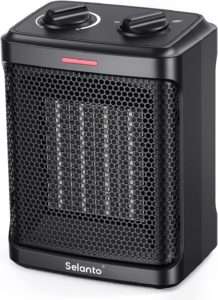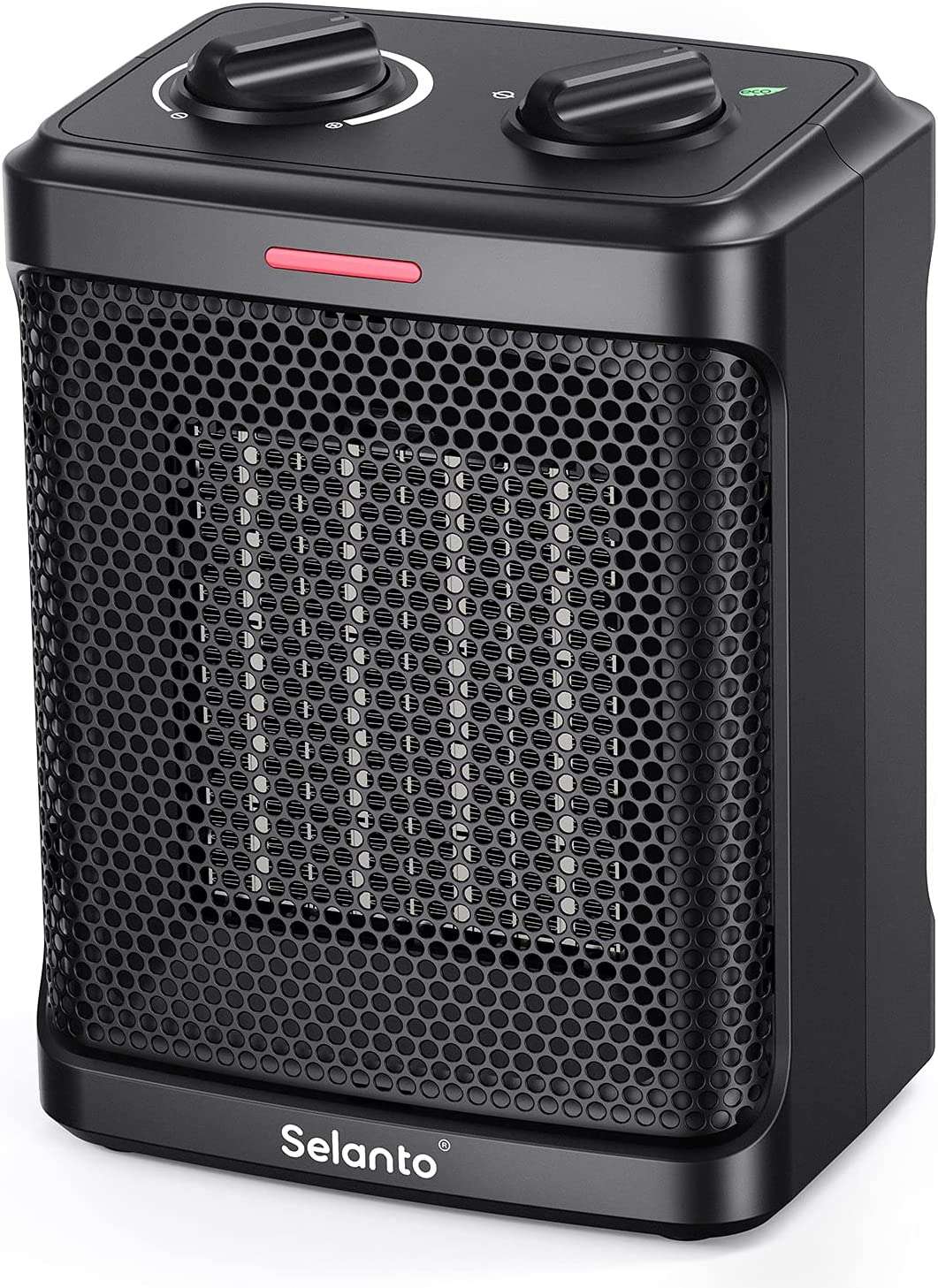This post may contain affiliate links which means I may receive a commission for purchases made through links.

Although there are many types of space heaters on the market, infrared and ceramic heaters are some of the best options out there. They provide a more efficient and affordable way of warming your home during the winter season, making them much better than using oil and gas. So, if you’re looking for a reliable space heater, you’ll eventually need to choose between a ceramic and infrared heater!
As you’d expect, there are some differences between these space heaters. Interestingly, this article will show you various important aspects of a Ceramic Vs Infrared heater to help find the right option for your home!
Infrared Heaters
An infrared space heater is a type of radiant heater, meaning that it warms objects directly. It sends infrared rays in a straight line, heating any object that is in its path. This could be a person standing right in front of it or the wall in your living space, which then radiates heat.
Unlike convection heaters, IR heaters don’t depend on keeping the hot air inside (airflow). Therefore, you can leave your wind open on a cold day, and still get the same level of warmth from the IR heater. In addition, these heating systems are energy-efficient, silent, and require minimal maintenance.
Ceramic Heaters
A ceramic heater is a type of convection heater and has been around for several years. In essence, convection heaters work by passing cold air over a heated element and blowing the hot air into a room.
In most cases, these heating systems are equipped with a fan to promote quick circulation of the heated air. However, some ceramic units come without fans, but the working principle is the same. That is; the air is circulated through a heating system. Usually powered by electricity, the fans ensure that the warmth spreads across the room.
As the name suggests, the heated surfaces in ceramic heaters are a bunch of ceramic plates that are heated by electricity. Moreover, they can be equipped with a thermostat for temperature regulation. All in all, convection heaters are suitable if you’re frequently changing your position or if there are several people in the room.
Infrared Vs Ceramic Heaters; Detailed Comparison
-
Energy Efficiency
Although both types of space heaters are energy efficient, infrared heaters are more efficient than their ceramic counterparts. Here’s why!
The plates of ceramic heaters cool down faster to ensure less heat wastage. As a result, ceramic heaters have an efficiency of about 85 – 90%, which is incredible. On top of that, you can enhance their energy efficiency by closing windows and doors to reduce heat dissipation or using thick curtains. The only drawback with ceramic heaters is that you need to run them for a longer duration to warm your study or living room. All in all, the hot air they produce will stay longer in the air, keeping your room warmer for a longer time.
On the contrary, infrared heaters convert 100% of the supplied electricity to heat with almost zero losses as they transfer the heat in a certain direction. Moreover, they only need 40% of the energy to provide direct warmth to objects or people in their way. For that, they will take less time to warm anyone sitting next to them. Therefore, you’ll not need extra energy to heat the entire room.
-
Heating Area
Ceramic heaters cover relatively more space than infrared heaters because of the presence of fans. This allows them to circulate hot air around the house while heating it, giving it more coverage. Unfortunately, since these units usually have small, portable designs, most models can only cover an area of about 300 sq ft.
However, if you’re planning to heat a smaller room, you can use an infrared heater. Despite their slim structure, these units provide much warmth for small rooms since they heat a certain object in a short time. Besides, they’ll allow you to feel the warmth of IR rays that have direct contact with you.
-
Energy Costs
In terms of running costs, infrared heaters are better than other ceramic counterparts in heating small spaces. Better still, they consume less electricity by providing instant targeted heating. As an example, an IR heater can consume about 25 watts per cubic meter, while an energy-efficient ceramic model uses about 40 watts to heat the same space.
-
Portability
Both infrared and ceramic heaters are portable and lightweight. Therefore, you can easily carry them from one room to another. However, ceramic heaters are more portable than infrared units, thanks to their sleek and compact design. More notably, most units have a safe-to-touch handle to ensure convenient transportation. Best of all, they don’t need permanent installation since they’re standalone units.
On the other hand, portability can sometimes be a challenge with infrared heaters. Despite their slim profile, they are usually mounted on walls or ceilings. Therefore, if you’re planning to move them, you have to unbolt them and bolt them again in the new location, which can be exhausting.
-
Noise
One major benefit of IR heaters is that they provide super quiet operation. Therefore, you can leave them running overnight without distracting you in your sleep. This is because their heating process doesn’t need fans to circulate heat in the room.
As I mentioned earlier, ceramic heaters depend on fans to circulate heat throughout the room. As a result, they can be relatively noisy, making them unsuitable for office or bedroom use.
-
Safety
Ceramic space heaters are safer than IR heaters, especially if you’ve kids or pets around the house. This is because IR heaters can be quite hot, and not suitable for kids, toddlers, or pets. Also, their heating element is either orange or yellow, which can attract pets and kids towards it. So, make sure you mount them properly from the reach of your kids and pets. Other than that, IR heaters are ideal for use if you’ve allergies since they don’t circulate dust throughout the room.
As for ceramic heaters, most models are equipped with an extra safety option that automatically turns off the heater if it overheats to prevent accidental fire. However, this feature can also be found in IR heaters.
-
Maintenance
Since infrared heaters don’t have any moving parts, they rarely break down and require minimal maintenance. In most cases, you only need to clean them to remove any dust and dirt buildup that may affect their efficiency.
Contrarily, ceramic heaters have several moving parts including the fan setup. Therefore, they’ll typically need more maintenance than their IR counterparts in the long run.
What is better; Ceramic or Infrared Heater?
Overall, both types of space heaters are highly efficient and offer comforting warmth during the cold season. More importantly, each heater has its unique features and benefits. Therefore, choosing an Infrared Vs Ceramic heater will be mainly influenced by your heating requirements budget and room dimensions.
In that regard, ceramic heaters are suitable for heating large spaces. Better still, their portable design makes them easy to transport from one room to another. On the contrary, Infrared heaters are much more affordable and ideal for smaller rooms. However, if you’ve kids or pets, make sure you properly mount them on the ceiling or walls for safety reasons.
